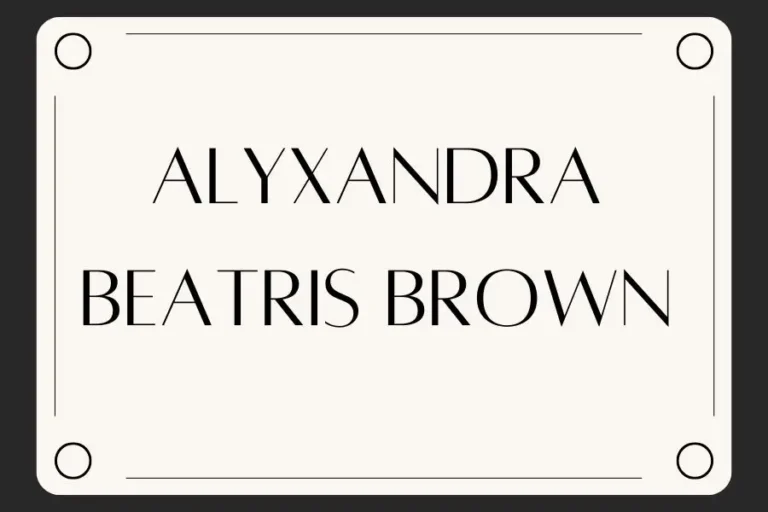Ciulioneros: Their History, Cultural Importance, and Influence Today

Throughout history, cultural traditions have shaped communities and defined their identities. Among such traditions, the Ciulioneros have emerged as significant figures, symbolizing much more than mere historical or spiritual connections. These unique cultural characters are intertwined with a rich tapestry of folklore, art, and modern interpretations.
Their continued relevance today highlights the importance of preserving traditions for future generations. In this article, we’ll examine the Ciulioneros’s history, cultural significance, and lasting impact on society.
Who Are the Ciulioneros?
Ciulioneros are deeply rooted in various traditions, playing essential roles in certain communities’ festivals, celebrations, and daily lives. These figures often blend ancient mythology, spirituality, and historical significance. Over time, they have grown from symbols into living embodiments of cultural pride and identity.
Traditionally, the Ciulioneros have been revered as guides, protectors, or even spiritual leaders, depending on the region. They are often connected with elements of the natural world, such as the sky, earth, or water, reflecting humanity’s deep-rooted connection with nature. In ancient societies, people believed these figures could influence their personal lives and communal well-being, often invoking them for protection, luck, or guidance.
The Cultural Significance of Ciulioneros
Ciulioneros hold a vital place in the communities that revere them, acting as links between the past and present. Their presence in traditional practices reflects the values, beliefs, and experiences that define those communities. Understanding Ciulioneros’ role provides insight into how people preserve their history and adapt it to modern times.
Symbolism in Ciulioneros
The Ciulioneros carry deep symbolic meanings, often connected to spiritual and natural elements. In many traditions, they are seen as intermediaries between the human world and forces beyond, such as the spiritual realm or the divine. Their attire and appearance often feature elaborate symbols of power, wisdom, and protection. Items like headdresses, ceremonial costumes, or tools represent their abilities and status within the community.
In various cultures, the Ciulioneros are believed to protect against evil and bring good fortune, making them indispensable in religious and cultural rituals. The beliefs surrounding them may vary, but their role as central figures in community celebrations has persisted for generations.
The Role of Ciulioneros in Modern Society
Despite being deeply connected to ancient traditions, the Ciulioneros remain relevant in modern society. They continue to influence festivals, cultural events, and social movements, acting as symbols of pride and identity. Their imagery has even found its way into modern art, literature, and media.
Ciulioneros and Cultural Identity
One of the Ciulioneros’ most significant contributions is strengthening cultural identity. For communities that celebrate them, the Ciulioneros are more than just historical figures; they represent the people’s collective values and shared experiences. These figures remind individuals of their roots through festivals and ceremonies, reinforcing the importance of cultural preservation.
As globalization grows and cultures interact more frequently, maintaining a unique cultural identity becomes increasingly important. Ciulioneros serve as anchors of tradition in a rapidly changing world, helping to ensure that a community’s core values and history remain intact.
Educational Impact of Ciulioneros
Beyond their symbolic and cultural roles, the Ciulioneros also serve an important educational purpose. By incorporating the stories, rituals, and beliefs associated with them into academic programs, younger generations can learn about their heritage meaningfully. Schools, cultural institutions, and community centers often use the Ciulioneros as educational tools to teach history, folklore, and artistic traditions.
This educational role is critical in ensuring the continuation of traditional knowledge. Without efforts to educate the youth, much of the knowledge surrounding Ciulioneros could be lost as older generations pass.
The Challenges Facing Ciulioneros Today
Despite its enduring importance, the Ciulioneros tradition faces numerous challenges. The modern world, focusing on technology, globalized media, and fast-paced lifestyles, poses significant threats to preserving cultural traditions.
Globalization and Cultural Erosion
One of the primary challenges to the Ciulioneros is the impact of globalization. As the world becomes more interconnected, globalized cultures often overshadow local traditions. Mainstream media and entertainment draw attention away from traditional practices, making it harder for younger generations to connect with their cultural roots.
As people become more influenced by global trends, interest in maintaining traditional rituals like those involving the Ciulioneros can decline. If these figures are not actively preserved and celebrated, they risk becoming forgotten in favour of modern, globalized customs.
Commercialization of Tradition
Another significant challenge is the commercialization of traditional practices. As interest in cultural heritage grows, there is a risk that the traditions surrounding the Ciulioneros could be misinterpreted or even commodified for profit. Some communities have experienced a dilution of their traditions as they are altered to cater to tourists or commercial ventures. This can lead to the loss of these figures’ deeper cultural significance.
When cultural traditions become commodities, they lose their authenticity and connection to the communities that originally celebrated them. It’s essential to balance sharing these traditions with the world and preserving their meaning and value.
Preserving the Ciulioneros for Future Generations
Despite these challenges, there are effective ways to preserve the Ciulioneros’ tradition. Through education, responsible representation, and active participation in community events, the tradition can thrive and be appreciated by future generations.
Education and Community Engagement
One of the best ways to ensure the continuation of the Ciulioneros tradition is through education. Schools can integrate lessons about Ciulioneros into their curricula, teaching students about the significance of these figures in their culture. Community workshops and events can offer hands-on learning experiences, helping younger generations connect with their heritage more deeply.
Engaging the community in cultural events also promotes a sense of ownership and pride. When people actively participate in traditional ceremonies and festivals, they are more likely to feel a connection to their cultural history and pass it down to future generations.
Protecting Cultural Integrity
Protecting the authenticity of the Ciulioneros tradition is crucial to its survival. As mentioned earlier, commercialization poses a real threat to cultural preservation. One way to combat this is by promoting responsible tourism and education. Visitors to cultural festivals should be encouraged to respect and learn about the traditions rather than treating them as mere spectacles for entertainment.
Local communities can take the lead in preserving their cultural narratives, ensuring the true meaning behind the Ciulioneros is not lost. Communities can protect their traditions from exploitation by maintaining control over how these figures are presented to the public.
Government and Organizational Support
Finally, the support of governments and non-governmental organizations (NGOs) plays a significant role in preserving cultural traditions like the Ciulioneros. Governments can support cultural events, educational programs, and workshops promoting traditions by providing funding and resources. Grants for traditional arts and scholarships for students interested in learning about their cultural heritage are also valuable tools for ensuring that the Ciulioneros tradition continues to flourish.
The Influence of Ciulioneros in Art and Media
In recent years, Ciulioneros have gained recognition in modern art and media. Their unique appearance and cultural significance have made them popular subjects in various creative works.
Ciulioneros in Visual Art
Many contemporary artists have found inspiration in the Ciulioneros, incorporating them into paintings, sculptures, and installations. These artworks often explore cultural identity, history, and spiritual themes, using the Ciulioneros as symbols of strength, wisdom, and tradition.
Exhibitions featuring Ciulioneros imagery not only introduce audiences to the cultural importance of these figures but also help preserve their place in the public consciousness.
Representation in Literature and Film
The Ciulioneros’ stories and symbolism have also been incorporated into literature and film. Filmmakers and authors often draw on the rich history and folklore surrounding these figures to explore cultural heritage, identity, and spiritual themes. Through these media, the Ciulioneros continue to capture the imaginations of new generations, ensuring that their legacy endures.
Conclusion
The Ciulioneros are much more than just figures of the past. They are living symbols of cultural identity, pride, and tradition. From ancient rituals to modern festivals, their influence continues to shape the communities that celebrate them. While the challenges of globalization and commercialization threaten their preservation, efforts to educate, engage, and protect these traditions offer hope for the future.
By recognizing the importance of the Ciulioneros and working to preserve their traditions, we ensure that the rich cultural heritage they represent remains alive and thriving. Their stories, rituals, and meanings enrich our understanding of the world and our place in it. You can also know about Kennedy Funding Ripoff Report by going through that blog.
FAQs
What are Ciulioneros?
Ciulioneros are cultural figures rooted in ancient traditions and mythology. They often symbolize protection, wisdom, and community identity.
Why are Ciulioneros important in modern society?
Ciulioneros play a crucial role in maintaining cultural identity, offering educational value, and promoting social cohesion through festivals, rituals, and artistic interpretations.
What challenges do the Ciulioneros face today?
Globalization, commercialization, and the decline of traditional knowledge transmission are major challenges to preserving the tradition of the Ciulioneros.
How can we preserve the tradition of Ciulioneros?
Education, community involvement, protecting cultural authenticity, and support from governments and NGOs are all essential to preserving the Ciulioneros tradition.





